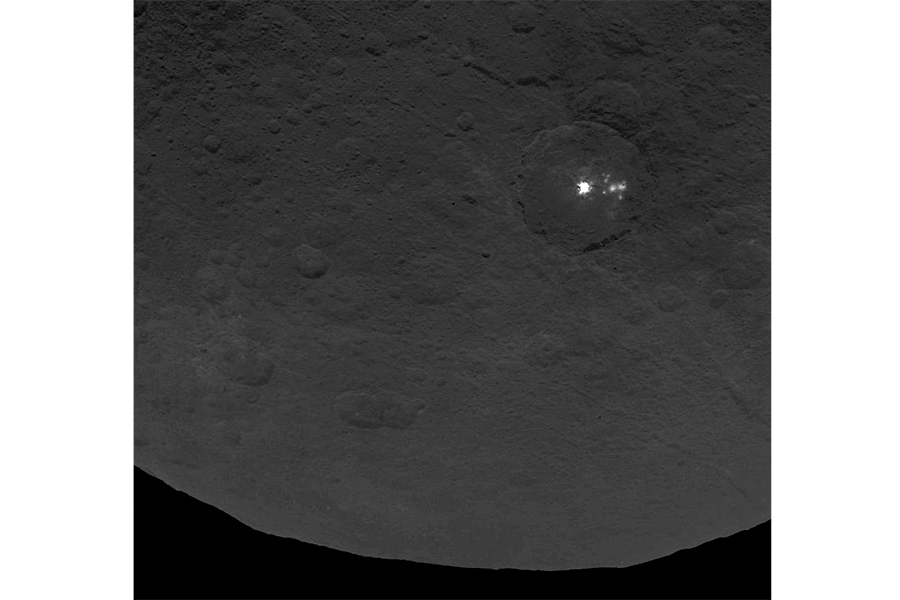Mysterious bright spots on Ceres: what do latest NASA photos reveal?
Loading...
Scientists on the Dawn mission have just received the clearest photos of the planet Ceres to date. The mission has been investigating two protoplanets in our solar system, Vesta and Ceres, in order to understand the conditions and processes of ancient history, according to the mission’s website. In May, photos of a mysterious bright spot on the surface of Ceres revealed a cluster of high-albedo areas of unknown origin.
The Dawn mission launched in 2007 and explored Vesta beginning in 2011 for over a year; now the mission is orbiting the dwarf planet Ceres. The two protoplanets are between Jupiter and Mars in the asteroid belt, and are the largest objects between the two planets.
The spacecraft, designed and built by Orbital ATK, Inc., has been able to get closer to the planet in the past couple of months, transmitting clearer photos back to Earth each time and offering sharper images of the mysterious bright spots on Ceres. Numerous theories about the bright spots have arisen since the beginning of the year, including that they may have volcanic origins or could be sheets of ice. The two protoplanets are known to be cold, and some suspect that cryovolcanoes, ejecting water, methane, and ammonia onto the surface, could be responsible.
Dawn’s principal investigator, Christopher Russell, of the University of California, Los Angeles, said in a statement last month, “Dawn scientists can now conclude that the intense brightness of these spots is due to the reflection of sunlight by highly reflective material on the surface, possibly ice.” The case is not yet closed, however, as scientists continue to consider other possibilities.
Dawn's futuristic ion propulsion system will make it the first spacecraft to orbit two bodies in the solar system, but the technology doesn't allow for speed, relative to rocket-propelled spacecraft. Some maneuvers will take weeks to execute. In less than a week, the spacecraft will begin to spiral down towards Ceres in order to get closer to these bright spots and hopefully to aid in answering questions about their nature and origin.






